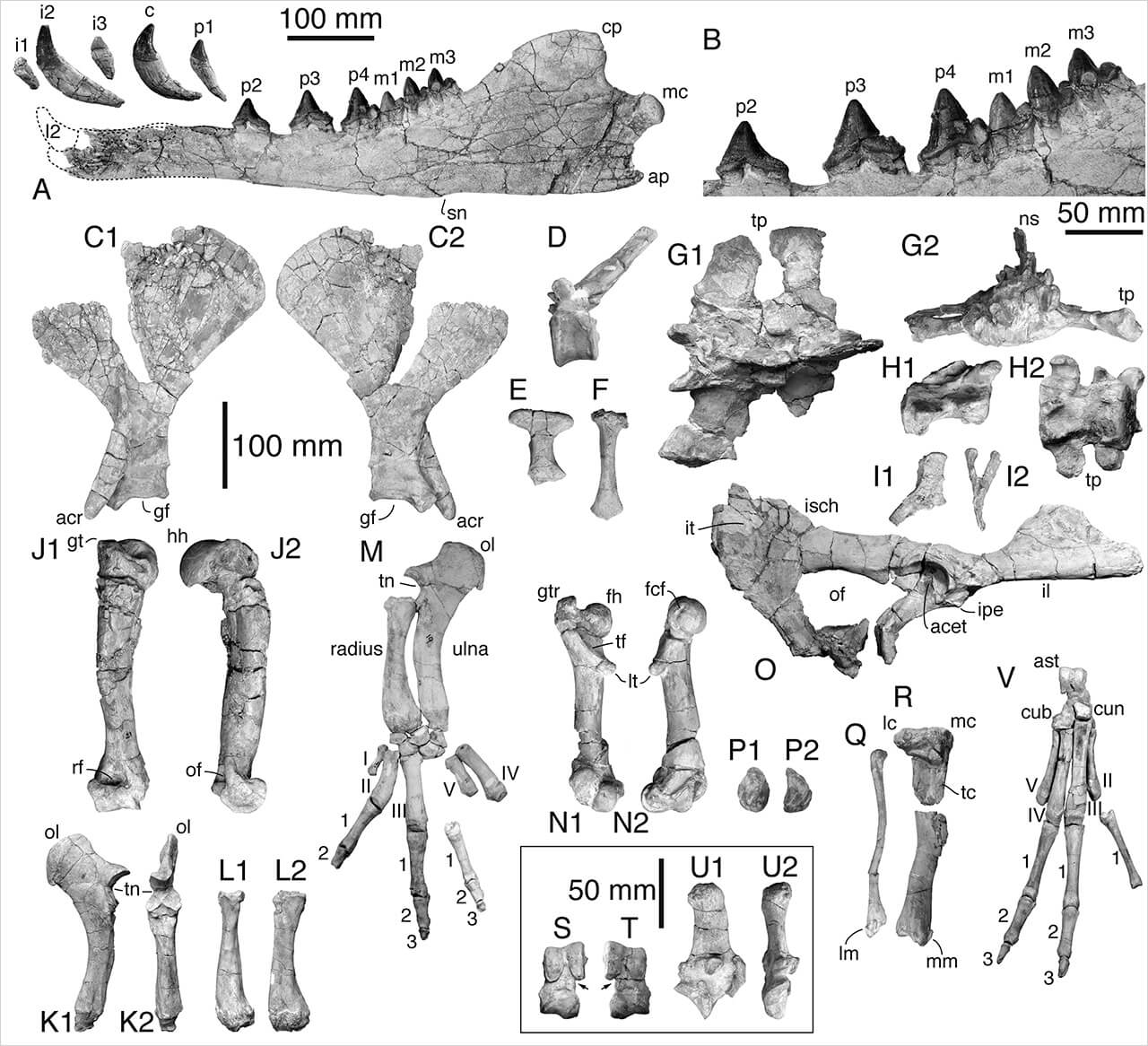Cetaceans, a group of whales and dolphins, appeared in South Asia more than 50 million years ago from a small four-legged hoofed ancestor. Now, in a study in Current Biology, scientists report the discovery of fossils of an ancient four-legged whale in marine sediments 42.6 million years old off the coast of Peru, which has helped them gain new insights into the evolution of whales and their spread to other parts of the world.
The presence of small hooves and the general morphology of his limbs suggest that the whale could have walked on land. On the other hand, the anatomical features of the tail and legs, including possible membranes like an otter, indicate that he was also a good swimmer.
A few years ago, a promising area was discovered in Peru for the extraction of fossils in the coastal desert in the south of the country called Playa Media Luna. In 2011, an international team of scientists from Peru, France, Italy, the Netherlands and Belgium organized a field expedition during which they excavated the remains of an ancient whale called Peregocetus pacificus, which means “a wandering whale that has reached the Pacific Ocean”. This is the first undisputed record of a four-legged whale skeleton for the entire Pacific Ocean, perhaps the oldest for America and the most complete outside India and Pakistan.
Digging around the naked bones, we quickly realized that it was the skeleton of a four-legged whale, with its fore and hind limbs.
-Olivier Lambert of the Royal Belgian Institute of Natural Sciences
With the help of microfossils in the layers of sediment in which the skeleton was located, the find is precisely dated to the average Eocene or age of 42.6 million years. Anatomical details of the skeleton allowed scientists to conclude that the animal could maneuver its large body (up to 4 meters long, including the tail), both on land and in the water. For example, the peculiarities of the tail vertebrae resemble those of beavers and otters, which indicates a significant participation of the tail in swimming.
Researchers report that the geological age of the new four-legged whale and its presence off the coast of Peru strongly support the hypothesis that early cetaceans have reached the New World across the South Atlantic from the west coast of Africa to South America. China could benefit from oceanic surface currents and the fact that at that time the distance between the two continents was half that of today. Paleontologists suggest that it was only after reaching South America that amphibians migrated northward, eventually reaching North America.
An international team is currently studying the remains of other whales and dolphins in Peru.
We will continue our search in places with deposits similar to, and even older than, the Playa Media Luna layers, so more prehistoric ancestors of cetaceans may be found in the future.
-Olivier Lambert
An ancient four-legged whale bones was discovered
Click To Tweet
The post An ancient Cetacean, four-legged whale, bones was discovered appeared first on Upcosmos.com.
